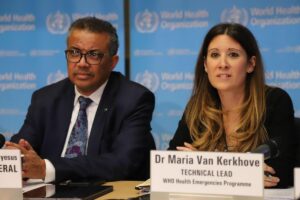Brazilian government and health experts, strange indication of the World Health Organization on the priority and effectiveness of mass tests.
This past Monday (17) the World Health Organization (WHO) reported that the way to contain the pandemic is by carrying out mass theses in suspected cases of coronavirus. During a press conference, the organization's health emergency program doctor, Maria Van Kerkhove said: "The central message is: test, test and test". According to her, you cannot stop the pandemic if you do not know who is infected.
The message is a novelty for the Brazilian government, which until then had adopted the application of tests only in more serious cases and in need of hospitalization.

“We were not waiting for this determination”, said the secretary of Health of the State of São Paulo, José Henrique Germann, in a press conference in the beginning of the afternoon. “I am surprised between the ideal world and the real world. It is one thing to make tests available, the other is to carry out tests ”, said infectologist David Uip, coordinator of the Contingency Center for the Coronavirus in São Paulo. “Let's see how the Minister of Health [Henrique Mandetta] reacts to this situation”, completed Uip.
Tests in Brazil
In Brasília, João Gabbardo, executive secretary of the Ministry of Health, responded by maintaining the policy that the country was already adopting: “We will maintain our position. Test in places where there is community transmission, serious cases and hospitalized people”, he said. “It is very strange to me that the WHO recommends it in this way, since the inputs are insufficient to test everyone”, he added.
João Gabbardo said that the government is considering importing rapid tests for the new coronavirus (Sars-Cov-2) in Brazil.
The mass tests were carried out by countries that managed to control the pandemic. This is the case of South Korea, which since the beginning of the emergence of the disease in the country has adopted a strong testing plan. The tests were not only on people with symptoms, but on everyone who had some kind of contact with infected people. The South Korean government, in order to further contain the spread, began to go to the homes of possibly infected patients. In this way, it performs more than 15,000 tests per day.
Uma pesquisa realizada por cientistas chineses e estadunidenses, demonstrou que na China, os infectados não detectados aceleraram a explosão dos casos da doença. Através de um modelo matemático, os cientistas foram capazes de mostrar que a maioria dos contágios na China foi realizada por doentes não detectados. E que somente após o confinamento é que esses infectados invisíveis reduziram seu potencial de propagação do vírus.
Social isolation as a solution
Na visão da infectologista Rosana Maria Paiva dos Anjos, especialista em saúde pública e professora da PUC São Paulo, o único meio capaz de conter, de fato, a pandemia de coronavírus é o isolamento e não necessariamente a confirmação da doença. “Como infectologista eu tenho certeza de que o melhor é fazer testes somente nos pacientes graves. Os que estiverem com quadro respiratório, permaneçam em suas casas, não circulem, usem máscaras e lavem as mãos”, afirmou ela. Para a infectologista a realização de testes indiscriminadamente só vai gerar pânico e mais custos para o sistema de saúde.
Situation in Sao Paulo
In São Paulo, the epicenter of the disease and the place with the first death record, the governor, João Doria, announced containment measures. Museums and cultural centers will remain closed, elective surgeries in public hospitals have been postponed and, in the capital, Mayor Bruno Covas has decreed a state of emergency. With a set of measures, including the suspension of car rotation, the ban on any public or private event and a shift and home office for the servers to work. As the days go by, the number of coronavirus cases in the municipality increases from 40% to 50%, Covas said.


